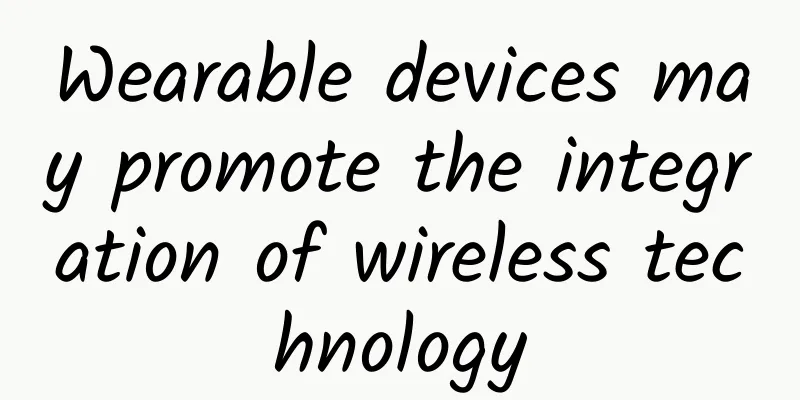Wearable devices may promote the integration of wireless technology

|
Although most of the current wearable devices are still concentrated in smart watches, smart bracelets, immersive glasses and the like, their exploration space has changed a lot. From the elderly to babies, from head-mounted to socks, from outside the body to inside the body, the exploration of wearable devices has extended to almost every part related to the human body. In the near future, physical screens will disappear, replaced by virtual screens displayed in any space, either in space, on the wrist, or through the vision of glasses. When this technology enters commercial application, it is inevitable to replace the current smartphones, but there is still a key factor, which is data transmission technology. Through the sensor technology of wearable devices, we can digitize any part of the body, including dynamic and static life posture characteristics, behavioral habits, lifestyle, etc. If these data are transmitted to the big data processing center in the cloud in real time and effectively, and at the same time ensure that the data analysis and processing results can be fed back to the user in real time and provide scientific guidance to the user, this means that data transmission is a very critical value point of wearable devices. Although a large number of companies are entering the wearable device industry, both large and small companies are working hard to develop various wearable devices in the hope of catching this business wave, and the well-known technology giants all hope to lead the industry in this wave. For example, Google Glass has been attracting attention since its birth, and has also caused different doubts. Intel not only launched smart bracelets, but also developed wearable devices including voice assistant headphones and baby monitoring jumpsuits. As the smart key connecting people and objects, wearable devices have obviously extended from the single data monitoring of people to the monitoring and connection of objects. In the field of smart home, some manufacturers have tried to connect and control smart door locks, home lighting, smart home appliances and other systems based on wearable devices; in the field of smart cars, some manufacturers have tried to replace car keys with wearable watches and achieve more intelligent control of cars; in the field of financial payment, some manufacturers have integrated NFC technology based on wearable devices to achieve payment in subways and buses. Although the relatively small physical screen operation of wearable devices currently brings an unsatisfactory experience to users, this problem will soon be solved with the application of voice interaction technology and the development of virtual reality technology. When display and connection are no longer a problem, the problem of real-time intercommunication and interconnection is now in front of us. How to achieve intercommunication and interconnection between devices, how to achieve intercommunication and interconnection between people and devices, how to achieve intercommunication and interconnection between data, and how to achieve intercommunication and interconnection between devices and the entire Internet of Things? These issues have obviously reached the point where they need to be considered. Although smart devices are increasingly relying on wireless technology or mobile Internet access, there are many types of wireless communication technologies. For example, in smart watches, smart bracelets, and smart glasses, Wi-Fi, Bluetooth, or mobile cellular technologies are usually used; in smart homes, wireless technologies such as Wi-Fi, Bluetooth, ZigBee, infrared transmission, etc. are usually used. But in the era of wearable devices where everything is connected, the problem is not whether things are connected to each other, or between people and things, but whether there is an effective connection between them. In recent years, with the rise of the wearable device industry, wireless transmission technology has received attention and has developed faster. With the rise of Wi-Fi and NFC, two wireless transmission technologies, Bluetooth technology in the mobile phone era has been constantly compared and discussed between the two, and of course mobile cellular technology is also participating in the competition. But based on the current situation, it is difficult to give up any of these technologies, because they all have their strengths and weaknesses. For example, in the field of communication-based smart watches or smart glasses based on wireless networking transmission, the current mobile 4G technology is needed. In the medical field, Bluetooth is more popular, especially under the low-power technology of Bluetooth 4.0, which can maintain a working period of up to one year or even longer with the help of a button battery. This is difficult for Wi-Fi technology to meet at present. The current Wi-Fi technology generally consumes a lot of power and is more power-consuming on the one hand, and on the other hand, it is easy to cause interference to some medical equipment, so it is relatively less used in the field of mobile medical care. This shows us that with the intelligence of wearable devices and the development of the Internet of Things, wireless transmission technology has become a core connection technology. Although the current wireless transmission technology is diversified and has its own strengths, this is only a development stage at present. In my opinion, the future wireless transmission technology will have two development directions: one is to make a breakthrough based on one of the wireless transmission technologies, integrate the advantages of multiple wireless communication technologies, improve the disadvantages, and thus become the mainstream wireless transmission technology; the other is that in the future wearable devices or smart devices, there will be multiple wireless transmission technologies at the same time, and the devices will automatically identify and select the best wireless transmission solution according to the environment. |
<<: The dilemma of second-tier mobile phone brands: How can Qihoo and Hammer seize the market?
>>: Tears on the Great Wall, moved from GitHub to GitCafe
Recommend
Why can’t Douyin influencer promotion be charged based on results?
Whether it is performance advertising or brand ad...
Can machines save the human soul? Here comes an AI chatbot that can "talk" to you!
The significance of artificial intelligence (AI) ...
Water is both the source of life and an obstacle to the formation of life. Why do we say that?
Water is the source of life. I believe no one wil...
A day's plan begins in the morning. How should you eat breakfast?
As the Chinese saying goes, a day's plan begi...
“Super Ear” really exists! How does the life detection radar “hear” the faint heartbeat under the thick ruins?
Tuchong Creative When it comes to radar, many peo...
On my way to work, I saw a pile of silt dug out by a subway construction project. I didn't expect that there was evidence of rice from 8,000 years ago.
Rice is of great significance to us. It not only ...
Clams, mussels, cockles, and cockles... Do you know all the shells in the vegetable market?
Audit expert: Li Weiyang Well-known science write...
The discovery of the Zhenghe Bamin bird rewrites the history of bird evolution
A bird that lived in Fujian 150 million years ago...
"Drink duǐduǐ, little belly" The child speaks cutely, which may also be a disease
Why do some children Do you always talk like you ...
2020 Short Video Content Marketing Trends
In 2020, due to the dual impact of economic downt...
Among all fruit-based alcoholic beverages, why is wine the only one with the greatest influence?
Written by Wei Shuihua Header image |pixabay In t...
Far beyond human imagination! More than 500 million years ago, "sponges" swam on the seabed?
□ Feng Weimin Sponges are the most primitive mult...
They have been enemies since the Ice Age, and now they still "love and hate each other"
Produced by: Science Popularization China Author:...
Are you a modern person who has been deeply “kidnapped” by WeChat?
Mary Meeker, a Wall Street securities analyst kno...
What will happen to your body if you eat one prune a day? Will it really cause diarrhea?
Among many fruits, prunes are one of the few that...









